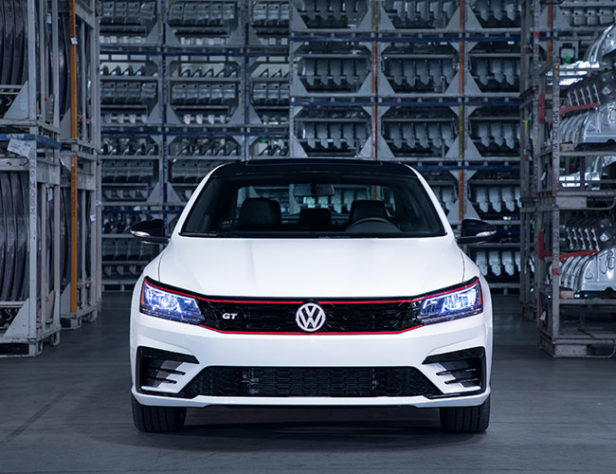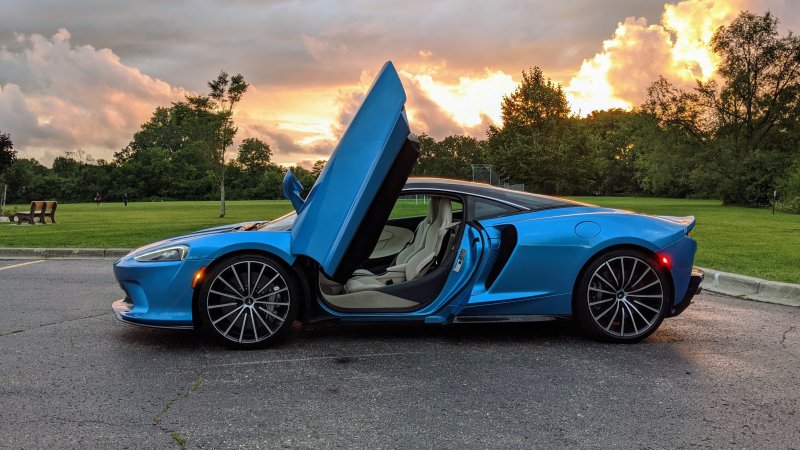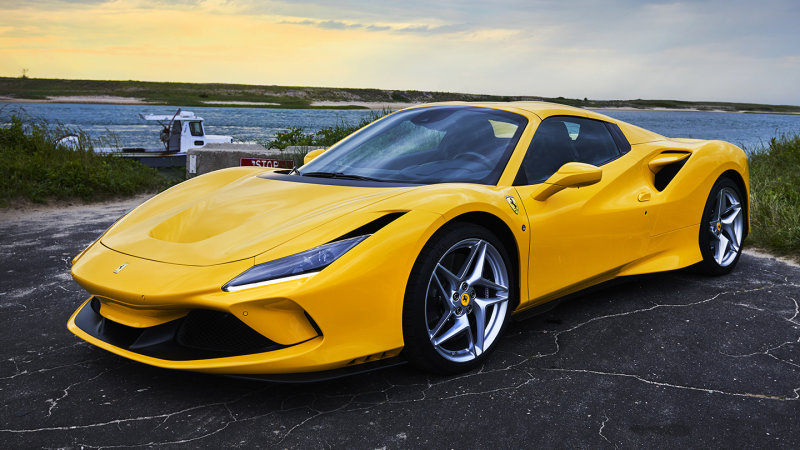Dieselgate may have been the best thing that could have happened to Volkswagen. Hear me out. The obnoxiously named “scandal” humbled the company in front of the entire world — perhaps exactly what VW needed. They’d been chasing Toyota’s number-one spot hard, and in doing the company and vehicle-quality suffered. After years of uninspired offerings with lackluster quality, it seems VW is back to doing what they do best: making affordable but distinctly German vehicles (built with the North American market in mind).
The Jetta has always done well here in the U.S. and apart from the Civic, I can think of no other car that car people are likely to have such a strong personal connection to. They have, for instance, been ubiquitous in high school and college parking lots since the model was introduced in 1979 as a two-door sedan replacement for the Beetle. While the Mk1 and Mk2 may have been the chariot of choice for tweed jacket wearing self-proclaimed “cool professors,” the Mk3 and Mk4 cast a wide net and became the apple of many an adolescent eye.
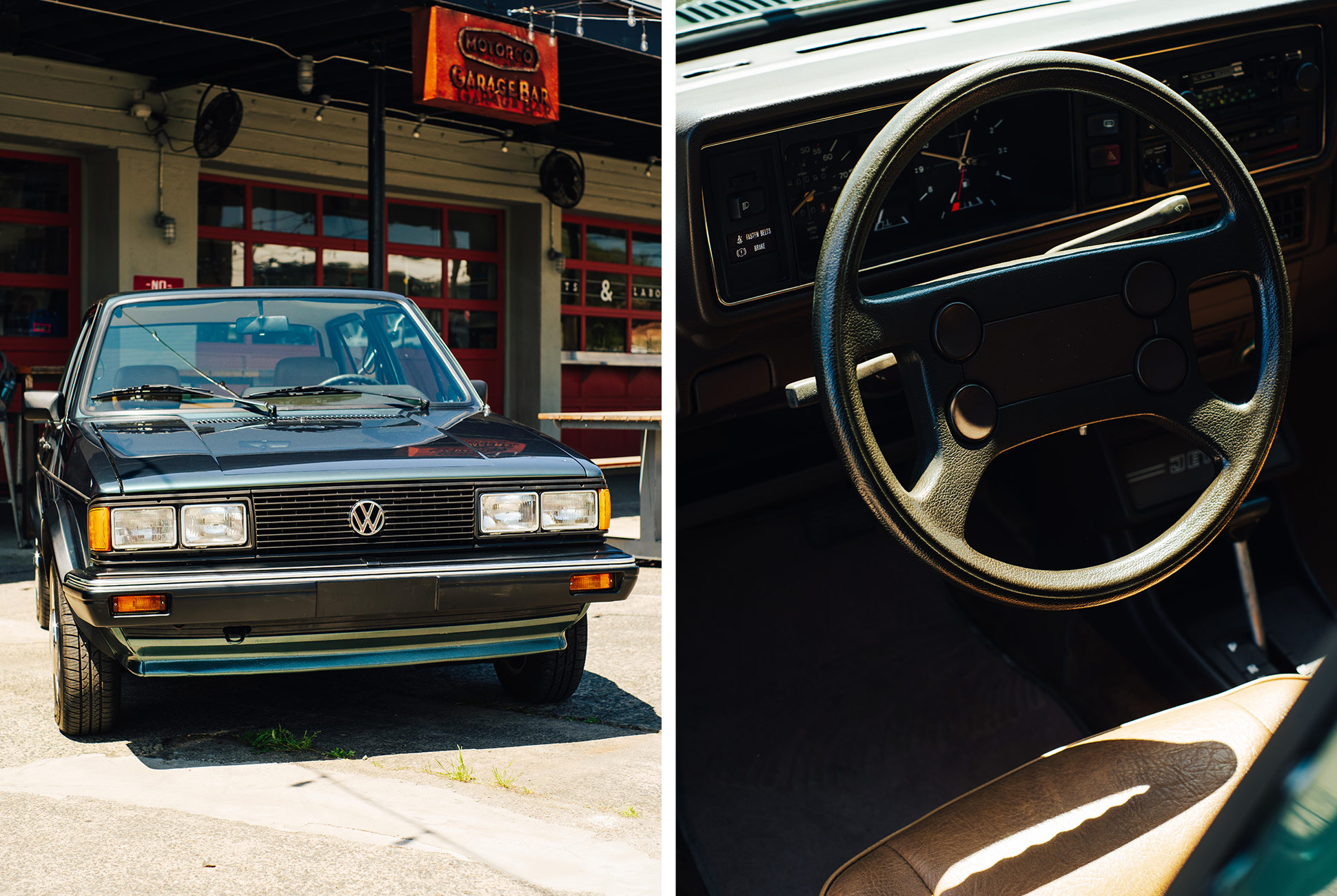
While I realize the prevalence of Jettas in my own life story is largely due in part to geographic and socioeconomic factors, think about your own connections to the Jetta. Chances are you’ve been in one at the very least, if not driven or owned one. It’s one of those cars that’s just part of life in America. So for VW to go and completely rework a car that’s part of the collective consciousness is a damn big deal. Fortunately, they seem to have gotten it quite right on nearly all fronts.
The Good: VW’s modular MQB platform has already proven itself as a great base for a vehicle (Audi’s A3 and TT share it too). Now that it underpins the Jetta, the car is instantly better than the version. Volkswagen has also wrapped a big ‘ol security blanket around it in the form of a six-year/72,000 mile transferable warranty, which certainly inspires confidence in the product. There’s a new sound-system tuned by Beats Audio that I found to be surprisingly nice given the middling quality of their headphones and home audio products. The 400-watt system did many of my favorite tracks justice, producing clean punchy lows and crisp highs. It did lack the meaty mid-range of a truly great system, but I wouldn’t expect to find that in a car at this price point anyway. It’s a system that gets the job done and then some, which is important in this segment.
In terms of looks, I’m just happy VW decided to let the Jetta stand out a bit. For too long the car has been easily lost in a crowd; now, with that big ‘ol grille and sharp lines running down the side, it’s no longer a mystery compact. Though I only saw them functioning in the daytime, the new LED headlights look mighty sharp too. Styling is always subjective of course, but what VW has done is match the premium feel and equipment with a premium look. Even a base model Jetta S looks good, which couldn’t be said of the last few generations.
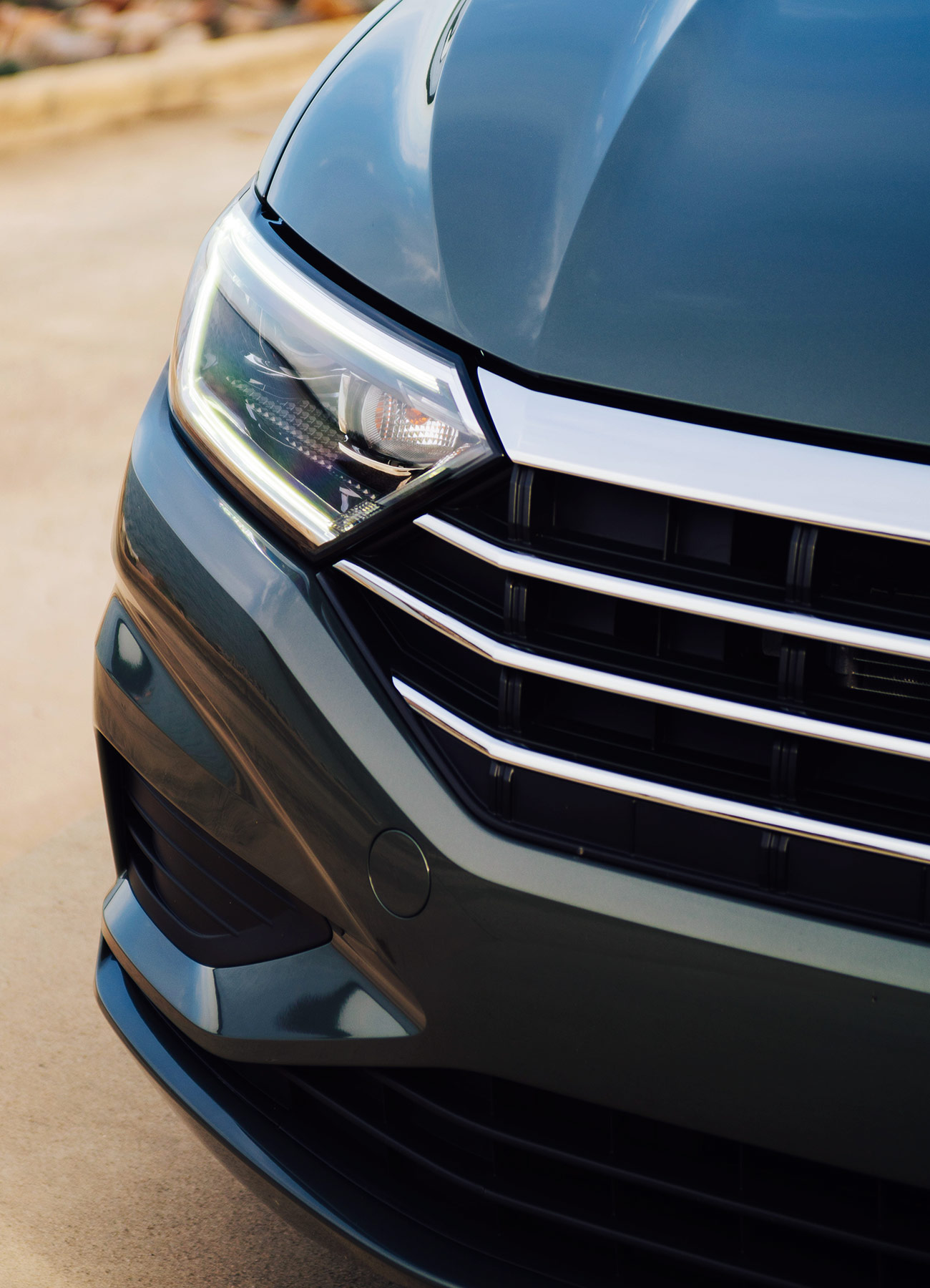
Who It’s For: It’s been about a decade since I’ve really thought the Jetta deserved to be called “the people’s car,” but with the changes they’ve brought to the 2019 model, it’s fair to say that it is indeed for everyone. Those looking for legitimate German engineering at a low cost of entry can once again turn to the Jetta to satisfy their desire for a solid vehicle. So can young professionals, old professionals, college graduates, college dropouts, teens with means and thrifty fifty-somethings. Are you environmentally-minded but don’t want to roll around in a boring economy car? Get a Jetta and drive it in ECO mode. Do you enjoy feeling some kind of connection to the road, and are you liberal with your right foot? Get a Jetta and drive it in SPORT mode. Just want something properly safe that also looks sharp but not overwrought? Get a Jetta S with a six-speed manual and add the Forward Collision and Blind Spot Monitoring package. Whatever kind of driver you are, there is or soon will be a Jetta variant for you.
Watch Out For: As is often the case with German automakers, be aware of what options are included with each trim level. For example, don’t assume that the top of the line SEL trim comes with power seats and navigation, because it doesn’t. (If you want those luxuries you have to opt for the SEL Premium.) Also, though the R-Line trim sports the differential out of the current generation Jetta GLI, it has neither paddle shifters nor the selectable Sport and Custom modes available in the SEL. I’m told that equipment is reserved the upcoming GLI which will be “really exciting” and “something impressive” according to a VW spokesperson.
Alternatives: In terms of fit and finish, only the Mazda 3 and Subaru Impreza are on par with the Jetta. The Honda Civic is the closest competitor in the field of driving dynamics and if it’s outright value you’re looking for all bets are off because Hyundai and KIA both have quality cars that are worth a look depending on what your buying parameters are. There’s also a new Toyota Corolla on the horizon that is apparently going to move it away from being a simple appliance. Most notably, given its new Audi-shared platform and updated looks, fit and finish and performance, you’d be wise to cross shop the Jetta with small premium cars, possibly saving yourself a ton of cash in the process.
Review: As I set out on my drive, I couldn’t help but think about the last Jetta I’d driven. It was a white over beige 2012 S manual model with no options — basic as it comes. That car felt absolutely anemic, its 1.4L turbo struggling to keep up with requests from the gas pedal. I’d been concerned about the fact that this new Jetta also runs a 1.4L turbo making just 157-hp, but its 184 lb-ft of torque gave me a shred of hope.
That shred grew considerably as I merged onto the highway with the Sport driving mode selected and gearbox in S too. (No, it’s not a redundant move, the selected driving mode is independent of the gearbox mode. You could drive around in Eco with the gearbox in S, though I don’t know why you would want to as standard shifts are still plenty snappy when you’re being green.) The eight-speed automatic is programmed well, save for the fact that it gets confused when suddenly dropped to S for passing maneuvers. Heavy throttle application followed by quickly letting off the pedal causes the tach needle to hang a few seconds longer than it should, a problem remedied by choosing your own gears with the transmission’s manual mode.

While following the gently meandering roads of rural North Carolina I was provided ample time to further ponder my past experiences with Jettas. Would any of my buddies who had owned Mk6s and Mk7s consider returning to the brand now that VW has finally delivered on the promise of a more grown up and driver-focused Jetta? Where does this Jetta fall in the history of the model?
I continued down a road with some halfway entertaining elevation changes and curvature. Finally, there was some terrain that should offer up some real feedback. I’m happy to say that not only was road feel information relayed to my hands and butt, but it was all positive. It was by no means a sports car-telepathic experience where I felt totally in sync with the car, but it wasn’t numb like the last Jetta I drove, or the one before that — or the bulk of this car’s competition. The Honda Civic remains the gold standard for slow-yet-fun cars in this segment; however, the Jetta is now a worthy adversary. I can’t wait to see what the new Jetta GLI is like given the nature of the regular Jetta.
Not since the Mk5 Jetta have I considered it to be a driver’s car at the core, but that’s now changed. It’s apparent from the moment you get inside and see the new geometric dash angled towards the left seat that VW is doing justice to their old tagline “Drivers Wanted.” The angle is so pronounced that it’s reminiscent of classic BMWs in that it really creates a commanding cockpit feel for the driver and says ‘don’t touch my radio dials’ to the passenger. I liked it a lot, as did just about everyone I talked to at the launch. I can only hope the average consumer will too.
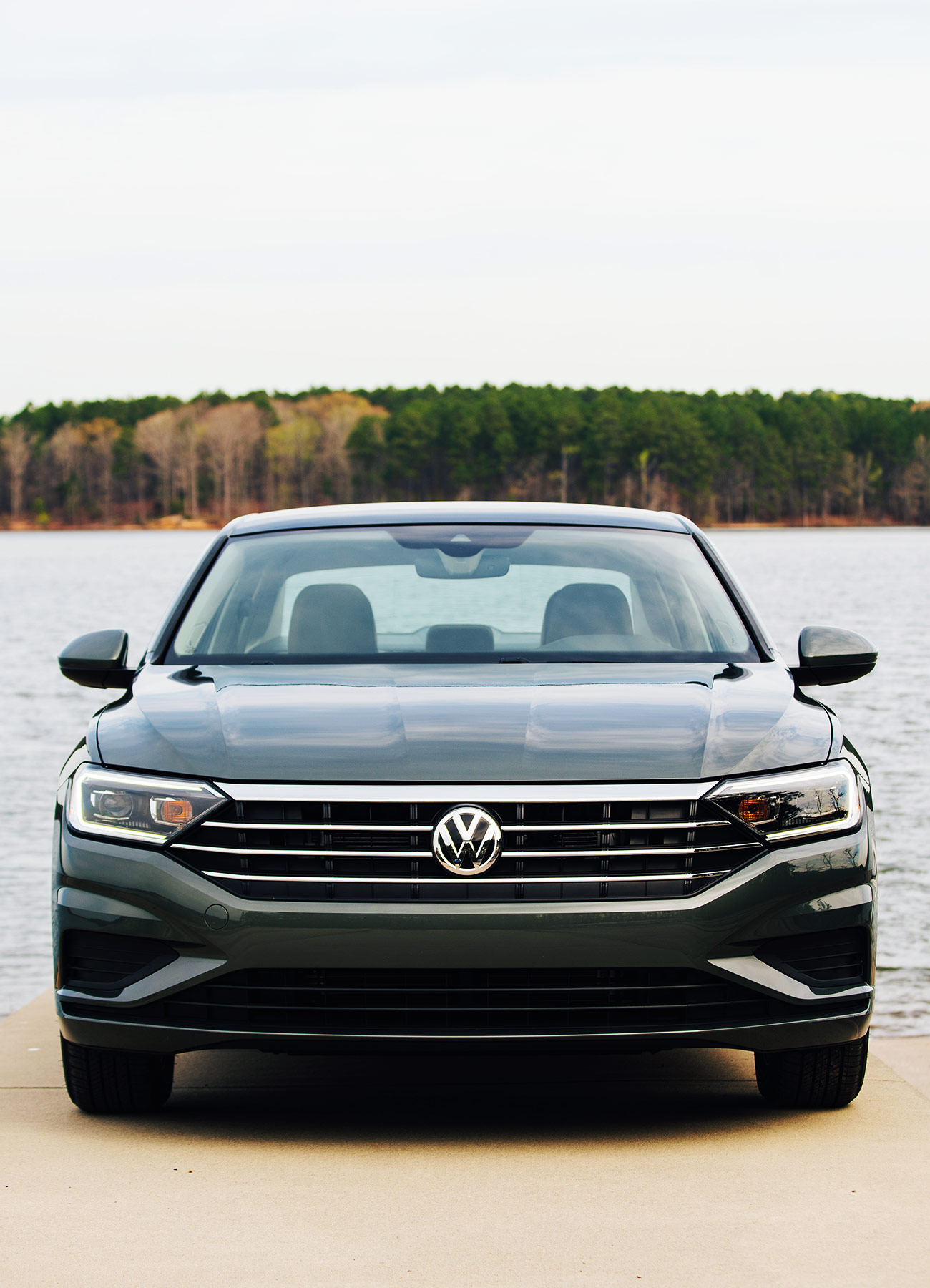
Verdict: I went into this drive really skeptical because of Volkswagen’s reputation as of late. I’d had a hard time getting behind the brand for awhile even prior to all that emissions business coming to light — they just weren’t the Volkswagen that I came of age with. This car, however, is a huge step in the right direction and looking out beyond the 2019 Jetta there appears to be a relatively clear path forward. It’ll be interesting to see what the public reaction to this car is. That said, a return to form for Volkswagen hinges on a generation of people who weren’t around in the “Das Auto” days. What they primarily know about Volkswagen is that the company was caught lying to their customers — a mighty hurdle to overcome. Fortunately for VW the new Jetta is poised to change that perception, and all people have to do is give them a shot.
Key Specs
Opting for the top of the line SEL Premium gets you comfy sport seats that are ventilated, and starting mid-2018 a Cold Weather Package that includes heated rear seats, a heated steering wheel, remote start and heated washer nozzles will be standard. A lot of goodies for $27,000.
Engine: 1.4 litre turbocharged inline 4 cylinder
Transmission: six-speed manual; eight-speed automatic
Horsepower: 147 horsepower
Torque: 184 ft-lbs
Number Of Interior Lighting Colors: 10!
Fuel Economy: 30 city/40 highway
Based on a concept Volkswagen brought to Automobility LA in 2016, Wolfsburg gave the new sporty Passat GT the green light. Read the Story


